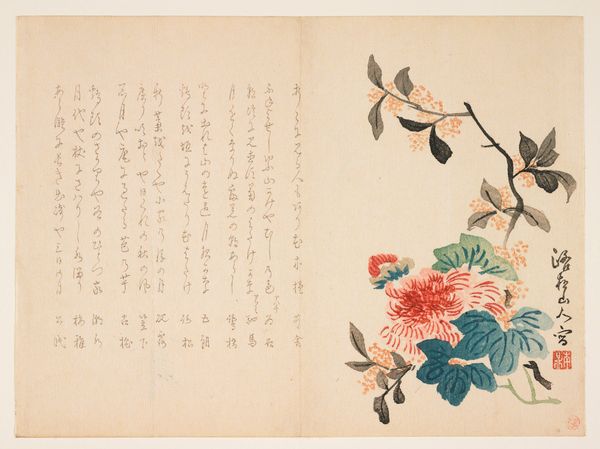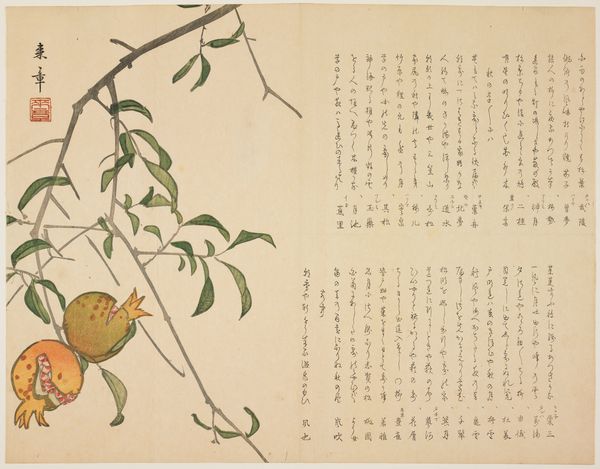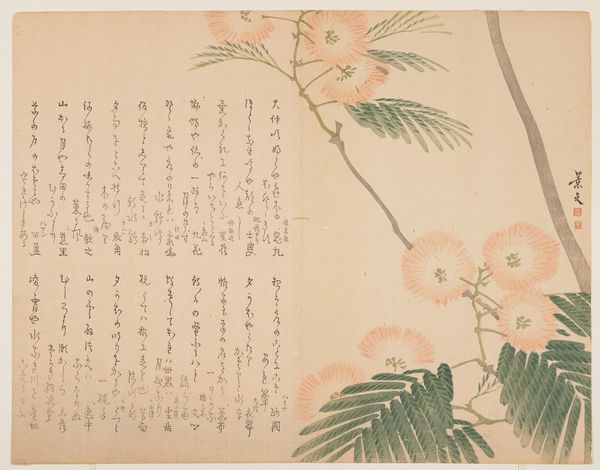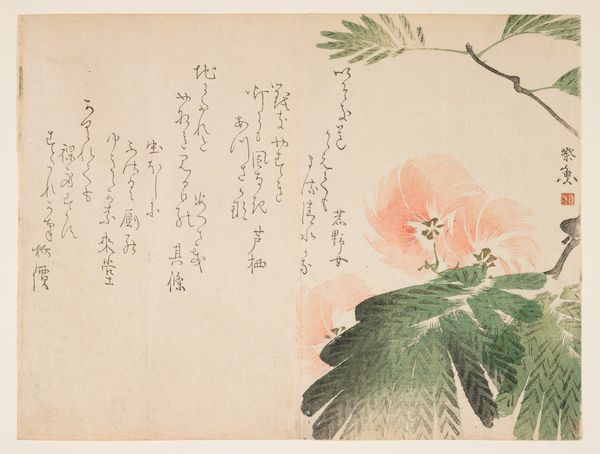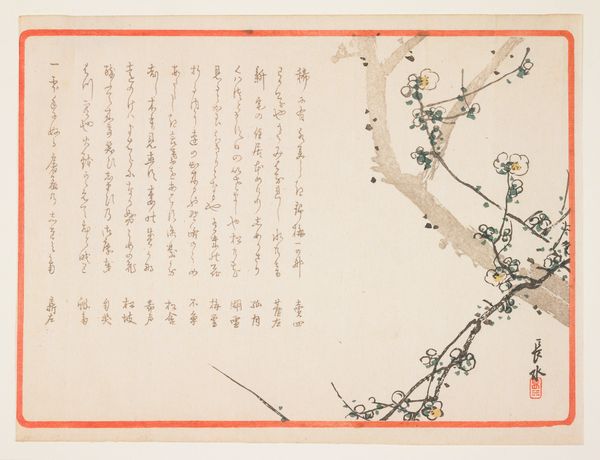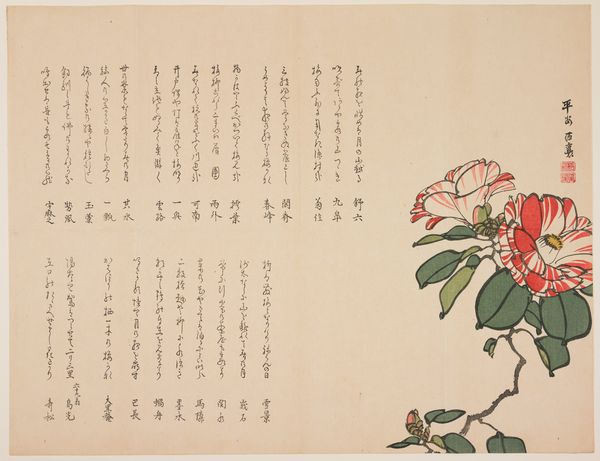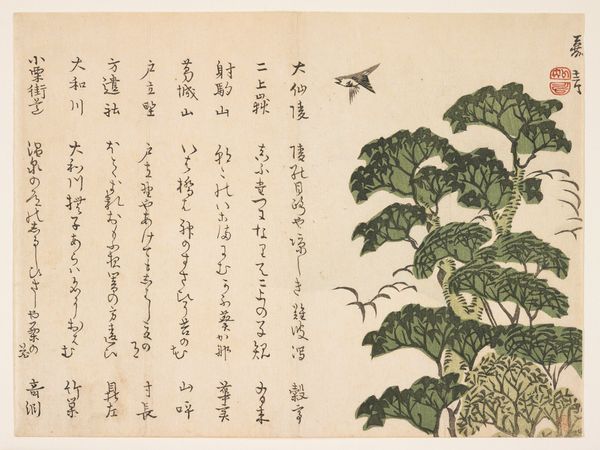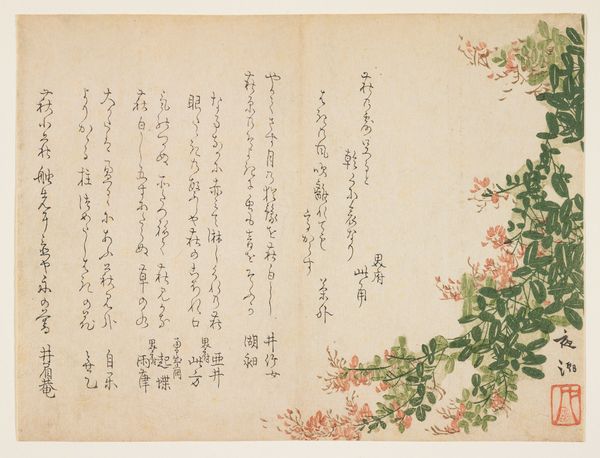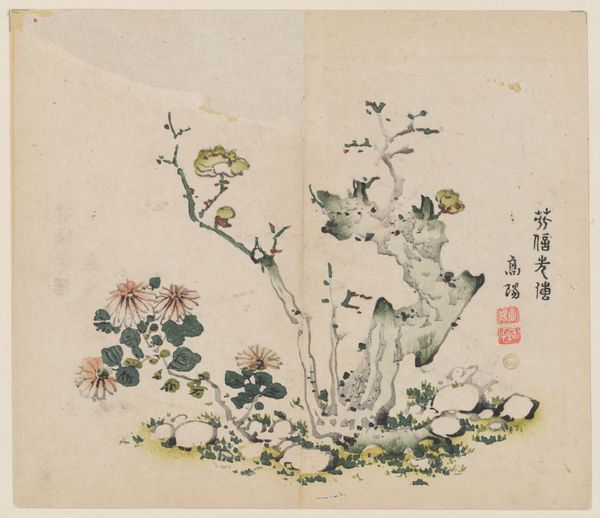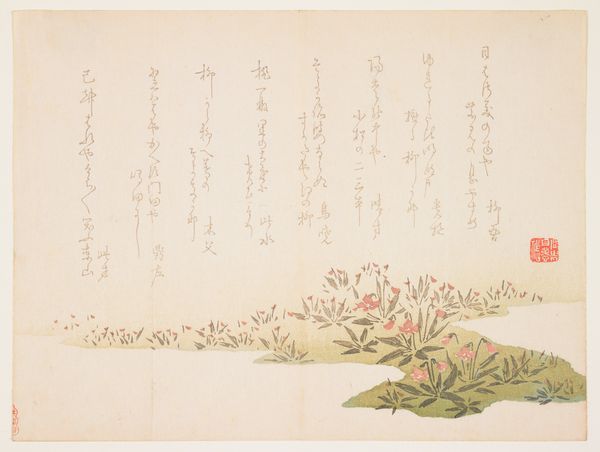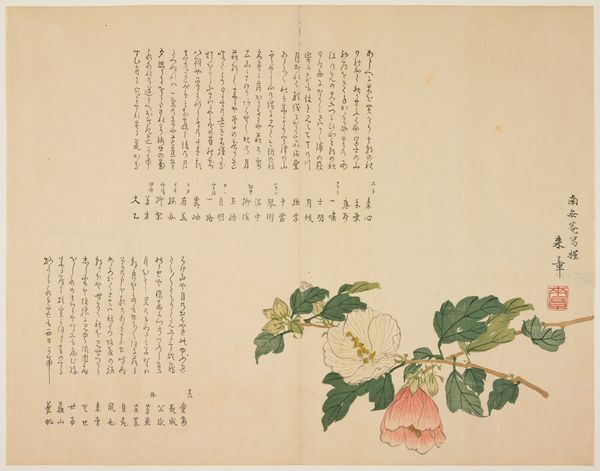
drawing, print, paper, watercolor, woodblock-print
#
drawing
# print
#
asian-art
#
landscape
#
ukiyo-e
#
paper
#
watercolor
#
coloured pencil
#
woodblock-print
#
botanical drawing
Dimensions: 54.8 × 40.7 cm
Copyright: Public Domain
Curator: Here we have "A Pine Tree and Camellias," a woodblock print by Niwa Tokei, created around 1815. It resides here at the Art Institute of Chicago. What strikes you about it at first glance? Editor: It's disarmingly gentle. Not what you expect when you hear "woodblock print." The camellias feel like quiet exclamations points against the stoic pine. And what about that paper it’s printed on, it looks almost aged. Curator: Right, the support, likely a kozo paper, is integral. Notice the chain lines and the way it receives the watercolor washes? Tokei wasn’t just an artist; he oversaw the entire production. He combined meticulous carving with nuanced coloring – seemingly simple but technically impressive. The texture hints at the labor involved, too. It makes me wonder about the socio-economic context. Who was consuming this art, and how did its production shape the cultural landscape? Editor: That aging quality is appealing! The way the pine's needles bleed ever so slightly against the muted background, well, it feels less like a representation and more like a living memory of nature. It triggers an emotional recall, makes you yearn for a quieter moment near these beautiful old things. Curator: It speaks to the ukiyo-e tradition. Prints like these became affordable art for the merchant class. It marks shift away from aristocratic art. Notice also the presence of calligraphy and what appears to be the printer's mark; it's all intentionally integrated, it gives the whole artwork an intimate feel of artistic labor. Editor: Exactly! I love how it straddles that line. High art accessible for all. This print reminds me to embrace quietude, to notice the subtle drama happening outside my window. Curator: It speaks to Tokei's intention but more broadly to the print industry's ambition in Edo period. The materials themselves speak volumes about trade, distribution, and consumerism. The color, the kozo paper, it wasn’t meant to be hoarded, it was for wide dissemination, a revolutionary thought at that time! Editor: Perhaps its beauty lies precisely in that ephemeral nature, in its material origins and artistic spirit all co-existing to celebrate the transient beauty all around. Curator: Well, I’ll keep looking at this now in an unexpected way. It truly embodies something very unique, beyond that which the artist conceived alone.
Comments
No comments
Be the first to comment and join the conversation on the ultimate creative platform.
